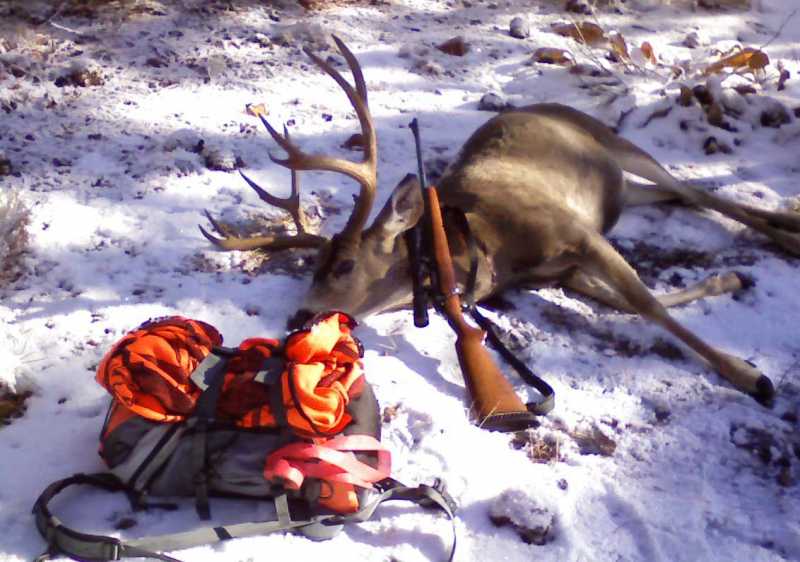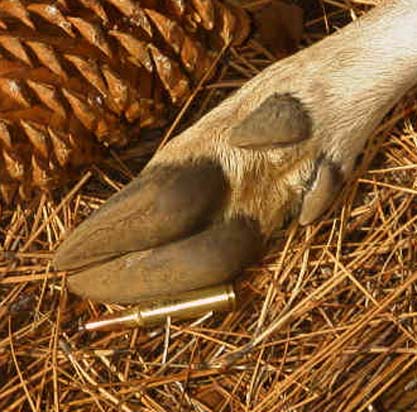I started reloading shotgun shells in elementary school, and paid others to reload for my .270 when I was in high school and a couple years after wards. While I did not reload the ammunition directly I did learn a few things. And the main benefit was that I was able to shoot a couple of hundred rounds before deer season and use the rifle to hunt Jack Rabbits and yotes. And the number of rounds per deer rapidly decreased with the installation of a scope and more practice.
Even with the taxpayer buying me ammunition and getting a lot of practice on still and moving targets I still reloaded for a number of calibers. It has been close to twenty years when a buck has required more then one shot. I was on top of a steep rock face and shot a moving buck a little far back. A second shot was required. Other then that I have had a steady string of one shot kills. Yes, they have come at a price, but a price that I am willing to pay. I feel that reloading has provided me with a more direct knowledge of the rounds I am loading. Part of that is a working relationship using a ballistics programs so that I understand what that loaded is doing after it has been fired from my rifle. An extension of that relationship the last few years is the use of a Chrony.
I believe that practice makes a safer hunter, because it allows him to have more gun handling time, be it at the range, hunting varmints, or other types of practice. A shooter who is familiar with his firearm is less apt to have an accidental discharge. It is scary to see a hunter who is not familiar with his rifle in the field.
Reloading, and testing at times can allow a shooter to improve on factory ammunition. As an example my father gave me his Remington 722 in .300 Savage when advanced age would no longer allow him to hunt. While the rifle was accurate, I found that Winchester, and Remington ammunition velocity was from 100 to 150 fps slower then advertised in the 722’s 24-inche barrel. I consulted a number of reloading manuals and IMR publications for data. I tried IMR4320 and IMR4064 powders and decided that I would go with IMR4064.
While common thirty years ago one needs to look around to find ammunition for the .300 Savage now days. And the only bullet weight I have been able to find on the shelve for years has been 150-grains. As a reloader most bullet weights and brands are within my reach. Bulk commercial brass has not been difficult to get. For a few years I was buying military surplus 7.62 brass and resizing and trimming to the correct length.
My family used 150-grain bullets in the three, .300 Savages in the house and they were proven deer getters. I developed a number of successful loads using 150-grain bullets, and also add AA2015BR powder. But I watched a friend shoot a number of deer with the 30-06 using 165-grain bullets. I was impressed with the results, and started using the 165 grain bullets in my –06. And decided that the 165 grain bullet was idea in the .300 Savage. It offered flatter long-range trajectory, and more energy then the 150-grain bullet.
I started working up a load using IMR4064. I found the accuracy good, and the velocity exceeded factory 150-grain velocity. I also found that I could load the Nosler PT, Hornady, and Remington C-L with the same charge and it will put the bullet in the same little group at 100-yards.
I have read a number of times where somebody says the .300 Savage is a difficult round to reload. All I can say is Bull Feathers. It is no more difficult then other rounds I load. Reloading has put new life into an old round for me.
This October, 2007 I carried the rifle hunting in memory of a father who started me hunting. He spent his hard earned cash on a new .270 for me, while he continued to hunt with his old .300. And I can remember the day he told me that he could no longer physically get out and hunt. He offered me the choice of his three .300 Savages and I selected the 722.
The results in the field were very satisfying.


The .300 Savage, the first short magnum that was developed to give 30-06 velocities in a lever action, when it first came on the market. Of course with modern powders the 30-06 far exceeds anything the .300 Savage does today. In this case the Nosler 165 grain entered the top of the right shoulder and exited the left side of the neck.